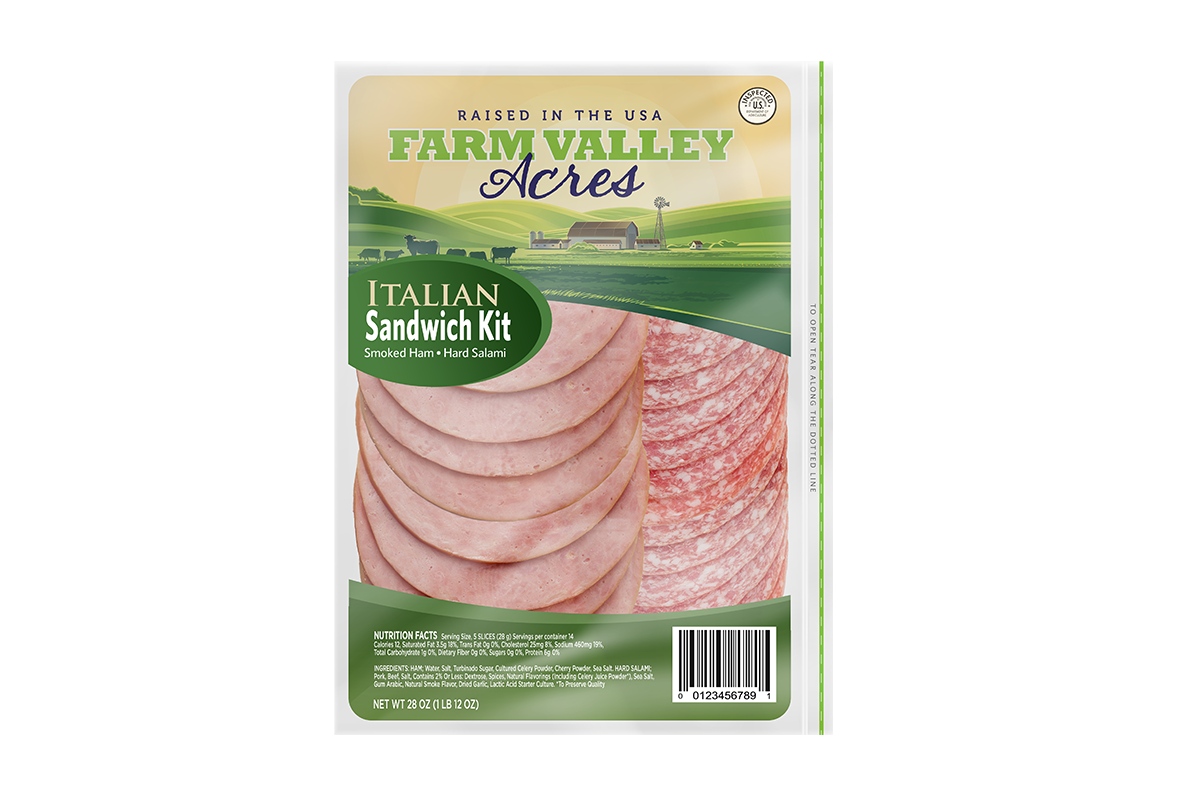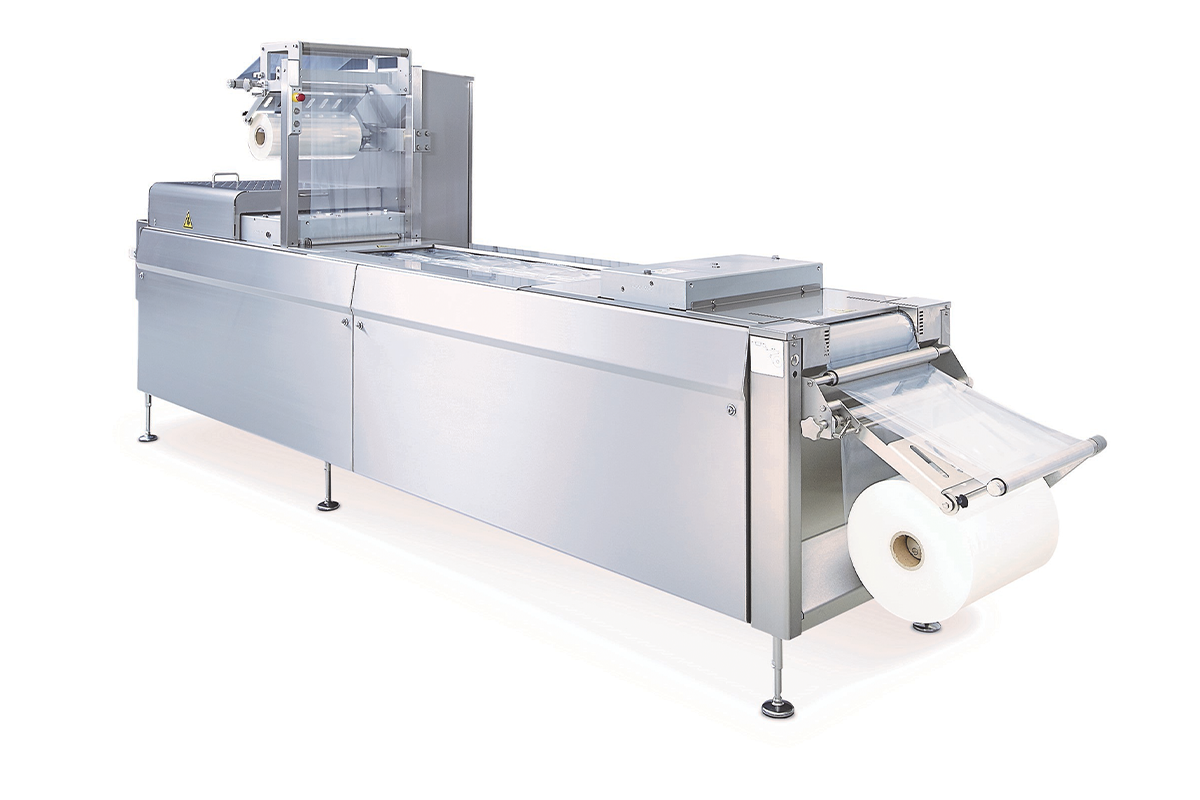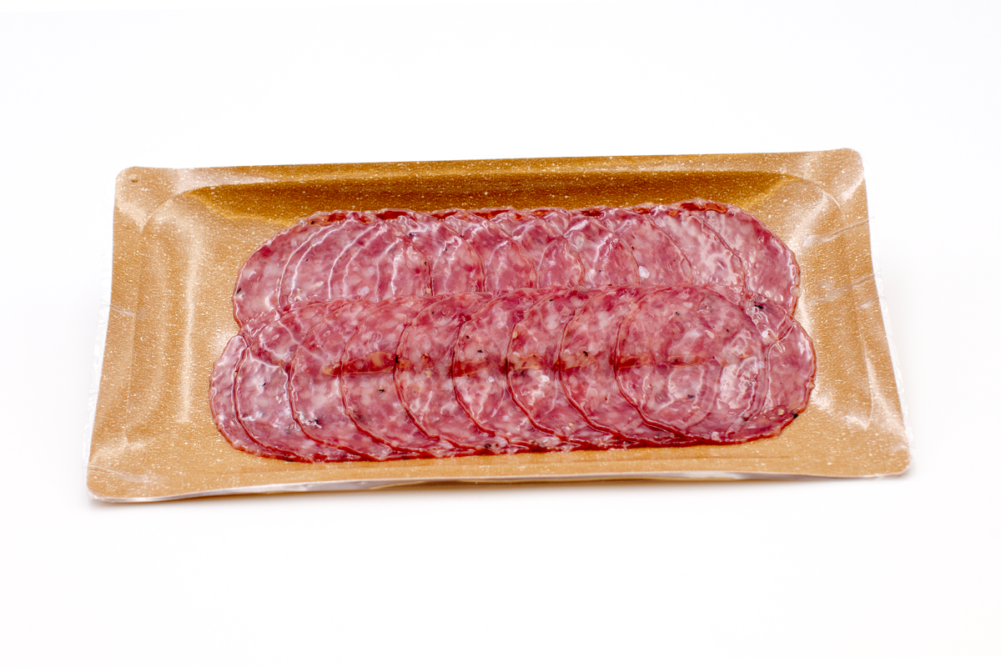Processors and their retailer customers want and need a variety of different attributes when it comes to packaging deli meat depending on the requirements of the specific product. However, certain patterns have emerged within the industry.
“First and foremost, customers must consider food safety,” said Mike McCann, packaging specialist at Canton, Mass.-based Reiser. “Also, a favorable presentation of the product’s quality as well as ease of access to the product in package.”
The ease of access and convenience to consumers is best when it does not sacrifice a processor’s production, line performance, and overall product quality. Packaging customers continually ask suppliers for new innovations that add such things as shelf appeal, including resealable packaging and newer packaging formats.
“Packaging in the crowded retail environment demands an exclusive and premium appearance to attract consumers, while also focusing on freshness of the product,” said Melanie Bandari, senior marketing manager, MPS, Amcor Flexibles, North America, Deerfield, Ill. “Our pre-packaged grab-n-go deli line offers a freshly sliced deli packaged look and feel, but the retailer doesn’t experience the labor costs of packing it on premises.”
Packaging and packaging equipment manufacturers strive to provide the newest innovations customers want while also focusing on being more environmentally responsible, looking to improve the sustainability message of their packaging.
Packaging pieces
Materials play a considerable role and have become an integral piece in the deli meat packaging industry and have evolved greatly over the years. Sealability, peelability, O₂ absorption, etc., all make big differences in the quality of deli meats and they all revolve around the materials used in packaging.
“Deli meats have different requirements that necessitate specialized packaging materials such as high barrier structures to extend shelf life,” Bandari said. “Packaging also plays a role in adding consumer convenience, improving shelf appeal, and enhancing brand awareness.”
The early successes of products like Deli Select used vacuum packs in a reusable lunch tub. Also early on, desiccant patches were used to ensure extra shelf life and quality. Environmentally friendly materials and appealing presentations such as zipper packs, slider opening features, have also been successful.
“The styles and closure/opening features are many and varied and can ensure success or lead to failure, so the use of our Reiser Customer Center and our package sampling abilities can be crucial,” McCann said.
Amcor focuses on convenience and resealability when designing closures and opening mechanisms for deli meat packaging. SmartTack, EZPeel and Reseal all use an integrated reseal technology that covers the entire top of the package. EZPeel offers tamper evident easy opening with no knives or scissors, reduces food waste, and extends the product’s shelf life. The line provides source reduction by reducing the additional packaging components in rigid tray and rigid lid applications and eliminates the need for labels with printed lidding.
“The SmartTack die cut resealable label is another option very similar to the EZPeel line, using a die cut resealable label with additional tamper evidence options,” Bandari said. “Both lines are now available with recycled content APET for more sustainability and offer a matte finish reseal system for on-shelf differentiation.”
Various capacities for volume help processors and retailers meet the needs of their customers and consumers as well.
“Processors can utilize different sizes to appeal to smaller households and club store shoppers, alike,” Bandari said.
McCann added, “Volume in the packages is a critical factor in shelf-life expectations, both the volume of product and the atmosphere to be evacuated, and volume to be gas-flushed in the MAP process.”
 Sustainable packaging is top-of-mind for many of today's consumers. (Source: Amcor)
Sustainable packaging is top-of-mind for many of today's consumers. (Source: Amcor)Evolve and innovate
Today’s markets can change quickly, and processors need versatility in their packaging systems to easily make changes when and if the market dictates something new is needed. Processors might want to invest in packaging systems based on simple platforms that carry a wide range of solutions, are easy to operate and change over, and make all styles of packages.
“Our equipment does not require plug-assisted, dedicated, and expensive forming systems,” McCann said. “Our machines can be switched from vacuum or MAP to skin with a simple seal plate change, and machines can be prepared to accept rigid cutting systems at a later date if required by market changes.”
Paper-based packaging solutions seem to be poised for significant growth. Paper-based systems offer a well-received end of life story with existing curbside recycling streams already built in. Amcor is bringing multiple high barrier paper-based formats to market. Packpyrus is a new line of thermoformable paper in combination with high oxygen barrier materials for extended shelf life and carbon footprint reduction compared to APET.
“The product is widely sold in Europe today for deli meats and is expanding into the Americas,” Bandari said. “The structure is 85% paper with a barrier layer to ensure product freshness and maintain shelf life.”
Packpyrus carries a lightweight footprint that reduces the use of space and offers upscale merchandising for lesser draw applications like shingled deli meats. It runs on existing thermoform equipment and requires no additional investments. Amcor is also promoting full graphics paper board tray offerings with Amcor vacuum skin technology and Amcor lid systems.
Customers always want to know what the “latest” or “new” thing is in packaging. Deli meat producers want creative solutions to give them an edge in a highly competitive market. Reiser’s Customer Center provides a resource for processors trying to obtain that edge. Reiser customers can use the Customer Center to create special packaging using all of Reiser’s packaging systems.
“We can make packs in all formats, special inserts, features, utilizing personnel with decades of packaging experience to help you have the best chance for success,” McCann said. “Numerous highly successful packages have started in our Customer Center.”
 Reiser provides deli meat processors with innovative solutions to give them an edge in a highly competitive market. (Source: Reiser)
Reiser provides deli meat processors with innovative solutions to give them an edge in a highly competitive market. (Source: Reiser)Packing into the future
Packaging manufacturers and packaging system manufacturers continue to increase performance and convenience technologies with the goal of finding new ways to create unique and innovative packaging that stands out, and stays fresher, on the shelf.
“We are innovating with our Amplify finishing technologies to ensure our packaging stands out in the eyes and hands of consumers,” Bandari said. “We offer a full portfolio of print technologies so packaging stands out, allowing our customers to customize their brand’s look and feel. Amplify technologies include matte, gloss, soft touch, metallic, antiglare, holographic, Kromasilk satin-finish, tactile, kraft paper, and digital printing. Amcor systems are proven to offer the scuff and rub resistance to survive the distribution process and still maintain the premium appearance.”
The Amplify finishing technologies also differentiate product on the shelf with a more natural look when placing healthier choice claims on the front of pack. Fiber packaging solutions are also of interest for on-pack claims such as no antibiotics, all natural or low sodium.
For the immediate future of deli meat packaging, Reiser’s Customer Center offers tools to afford processors good chances for long-term success in the deli meat segment.
“With a well-planned choice of versatile, flexible and simple machinery to protect and present your products, you’ll have a superior solution that helps you now and will help you in the future,” McCann said.
Convenience of grab-n-go, as well as reclosability, are ongoing trends to make life easier for consumers of all ages, abilities and lifestyles. Innovations and R&D in these areas will continue into the future.
“Sustainability continues to be top of mind in the marketplace,” Bandari said. “In 2018 we pledged to develop all our packaging to be recyclable or reusable by 2025. We’ve made significant progress on our path to reach that goal, including packaging for the protein industry.”



